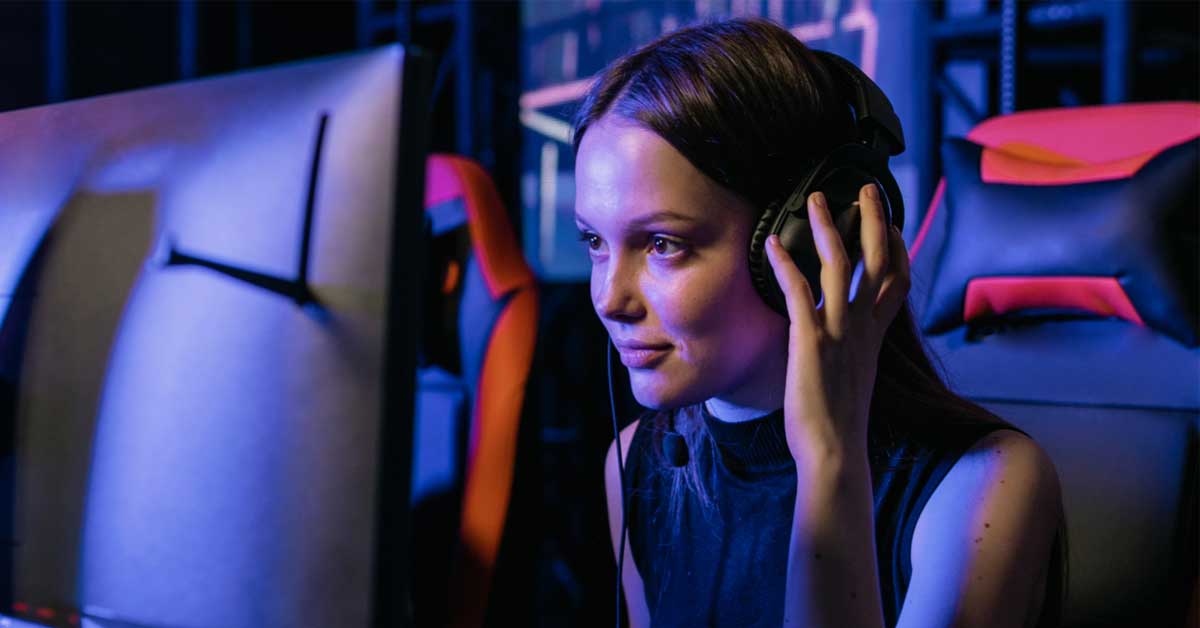The graphics processing unit, or GPU, is the heart of modern gaming. It’s the key component that brings life to those vivid graphics and intricate landscapes that have become the hallmark of today’s gaming experience.
But what about the GPU temperature? Is there an optimum level? What risks are there if it gets too hot? This crucial aspect of your computer’s performance necessitates discussion, so let’s jump right in.
TLDR: A normal GPU temperature while gaming is a band that stretches from 149°F to 185°F (65°C to 85°C). Within this range, you’re likely operating at peak efficiency without straining the system.
What Role Does the GPU Play in Gaming?
Known as the heart of visual technology, the GPU doesn’t just enable games to run smoothly; it revolutionizes the way we experience digital art. From lifelike graphics to seamless gameplay, the GPU is the unsung hero in the world of gaming. Let’s explore the many ways in which the GPU contributes to the gaming universe.
Gaming – A Demanding Task for Your GPU
The GPU is more than a piece of hardware; it’s an artist, engineer, and magician combined. Gaming is a domain where the GPU showcases its full potential, delivering visually appealing and realistic effects.
The GPU’s Importance in Other Applications
While gamers may see the GPU as the backbone of their immersive experiences, it also plays a vital role in other applications such as video and graphics rendering. It’s not only about fun and games; the GPU’s reach extends into various aspects of technology, demonstrating its true versatility.
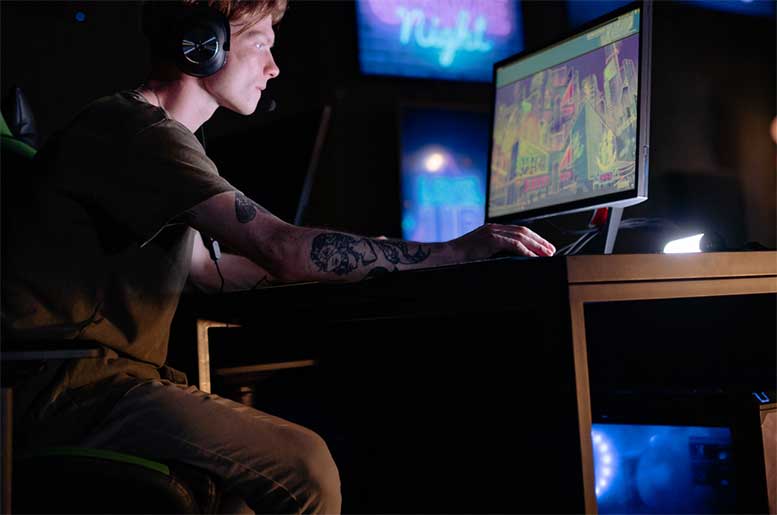
What Causes a GPU to Overheat?
When it comes to GPU performance, overheating is an enemy that often lurks in the shadows. This menace can sneak up on the best of systems, leading to decreased performance and even potential damage to your hardware.
So let’s unravel the complex web of factors that can cause a GPU to overheat while highlighting the notorious phenomenon known as bottlenecking.
Factors Contributing to GPU Overheating
Though overheating might seem like a straightforward consequence of hard work, the reality is far more nuanced. The multifaceted factors contributing to GPU overheating include:
GPU-Dependent Games: Intense and graphics-heavy games exert considerable pressure on the GPU, raising its temperature. If this happens too much and too often, it could spell doom for your PC.
Cooling System Quality: A subpar cooling system can lead to inadequate heat dissipation, contributing to overheating.
Ambient Temperature: The room temperature itself plays a role. A hot room means more work for your cooling system.
Case Quality and Airflow: The structure and quality of the computer case can affect airflow and, consequently, cooling efficiency.
Dust and Debris: Dust buildup can act as insulation, trapping heat within the GPU.
Age of Your PC: Older systems may lack the technological advances that prevent overheating.
Computer Fans Not Working Properly: The malfunctioning of fans can directly lead to a rise in temperature. Using one of the best PWM fan controllers is a great way to mitigate this.
These factors often intertwine, creating a perfect storm that causes the GPU to overheat. Understanding and addressing them can ensure that your GPU operates within safe temperature limits.
The Effects of Bottlenecking
Bottlenecking is more than a buzzword; it’s a critical factor that can hamper the performance of a computer system, especially the GPU. Here’s how it works:
Restriction of Performance: Bottlenecking occurs when one component (like the CPU) can’t keep up with another (like the GPU), limiting the system’s performance.
Link to Overheating: A bottlenecked GPU may try to overcompensate for the restricted component, leading to an increase in temperature.
Detection and Solutions: Identifying a bottleneck often requires careful monitoring of system performance. Solutions may include upgrading the limiting component or optimizing system settings.
The term ‘bottlenecking’ may seem abstract, but its effects are very real. Understanding what it means and how it links to overheating can save you from unwanted surprises and ensure a smooth gaming experience.
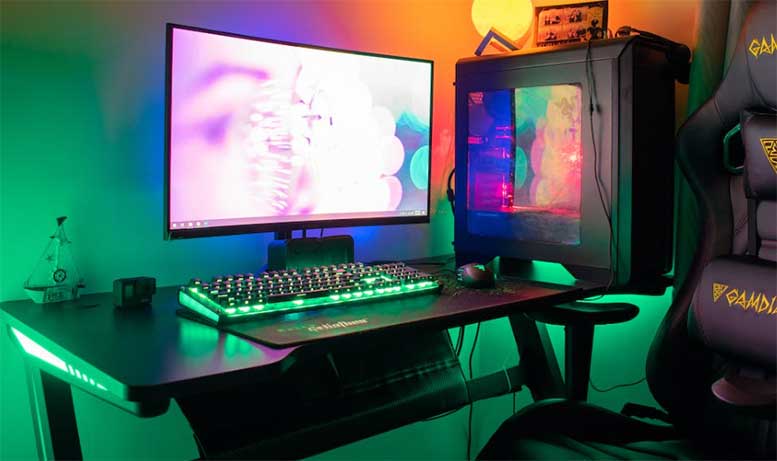
What’s the Optimal GPU Temperature for Gaming?
In the pursuit of gaming excellence, the GPU temperature plays a pivotal role that often goes unnoticed. Too cold, and you’re probably not pushing your system to its full potential. Too hot, and you could be skating on thin ice.
Here, we go over the optimal temperature range for gaming and the potential consequences if the heat rises too high. Knowing the ideal temperature range can help you prevent a catastrophic failure and expensive replacement.
The Safe Range for Gaming
Navigating the fine line between performance and safety is key when it comes to GPU temperature. The optimal GPU temperature for gaming is a band that stretches from 149°F to 185°F (65°C to 85°C). Within this range, you’re likely operating at peak efficiency without straining the system.
Manufacturer Differences
It’s essential to recognize that this range isn’t universally applicable. Different manufacturers and models have varying safe temperature ranges. Always consult your GPU’s specific guidelines, but keep in mind that, generally, maintaining a temperature below 185°F (85°C) can serve as a solid baseline.
Long-Term Damage and System Instability
If ignored, these early signs can snowball into more severe problems. Prolonged exposure to high temperatures can lead to irreversible damage, not just to the GPU but to other components that may be affected by the heat. This can manifest as system instability, crashes, and, eventually, a premature farewell to your gaming rig.
Monitoring as a Preventive Measure
In this age of technological wonders, numerous hardware monitoring apps can serve as your GPU’s personal weather station. Regular checks on the temperature spikes and understanding what’s happening as it occurs can be the umbrella that shields you from the downpour of GPU issues.
High GPU Temperature and Throttling
Some gamers have experienced a phenomenon called “throttling,” where the GPU deliberately slows down to prevent overheating. This is like a self-imposed speed limit or governor designed to protect the GPU, but it can cause a sudden drop in game performance.
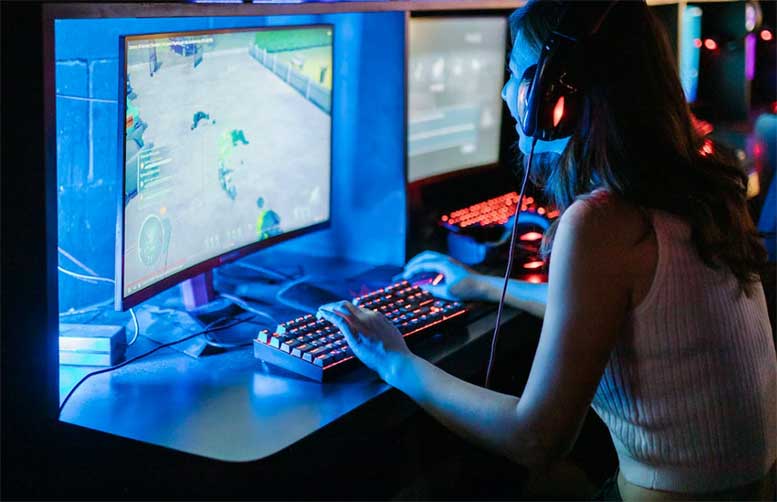
Strategies to Lower GPU Temperature
When the mercury rises, it’s not just the weather that feels the heat; your GPU might be sweating, too! Here’s where the magic of maintaining a cooler environment comes into play. Think of your GPU as a performance athlete; it needs the right conditions to perform at its peak. Below are strategies that can be your GPU’s personal trainer, guiding it to cooler, more efficient running.
Location Matters
Your computer needs room to breathe. Placing your computer in cramped spaces can feel like putting it in a straitjacket. Give it space! Ensure that the computer’s surroundings aren’t restricting the air intake and exhaust.
Extra Cooling Mechanisms
Ever considered air conditioning for your computer? That’s almost what adding extra cooling is like! Cooling mechanisms such as laptop cooling stands, fans, or liquid cooling systems can significantly enhance your system’s cooling efficiency.
Regular Dusting and Checkups
Think of dust and debris as the cholesterol of your GPU – clogging up the works and reducing performance. Regular cleaning with proper tools is the diet plan your system needs. Keep those air vents and cooling systems dust-free, and your GPU might just thank you with years of faithful service.
Proper Tools and Techniques
Using the wrong cleaning tools could be as disastrous as using sandpaper on your monitor. Utilize compressed air cans or soft brushes to delicately whisk away dust without damaging sensitive components.
Cooling Your Environment
The area around your PC or laptop is as vital as the internal cooling system. Investing in air conditioning or fans for the room can be a game-changer. It’s like giving your GPU its personal climate control. And when used in conjunction with internal cooling mechanisms, you can add years of life to your GPU.
Timing Your Gaming Sessions
Odd as it may sound, using your PC during cooler parts of the day could make a difference. Your body’s the same way. Choosing to jog early in the morning instead of the sweltering afternoon can make all the difference. Timing could be a subtle yet effective way to keep your GPU’s temperature in check.
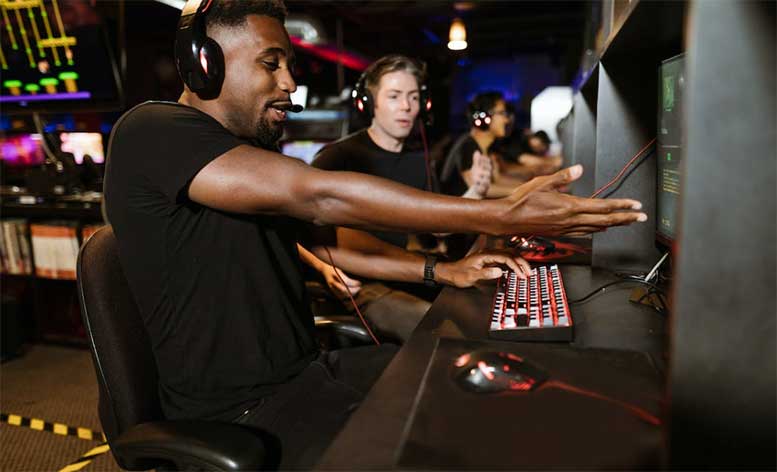
Monitoring Your GPU Temperature
Imagine if you could have a personal doctor for your GPU, always checking its temperature and ensuring its health. That’s essentially the role that temperature monitoring tools play. Just as a weatherman predicts storms, these tools can help you foresee and prevent GPU overheating. Let’s get to know them a bit more.
Windows: If you’re a Windows user, it’s like having a bakery filled with monitoring tools. Tools like Open Hardware Monitor, MSI Afterburner, and GPU-Z provide real-time insight into your GPU’s vitals. They’re like the computer’s personal fitness trainers, always tracking and advising on its health.
Linux: Linux hasn’t been left in the cold, either! With tools like Psensor and Lm-sensors, you can keep tabs on your GPU’s temperature with precision.
macOS: For the Apple aficionados, macOS offers XRG, Intel Power Gadget, and iStat Menus. These tools are well-tailored, offering sleek, elegant, and efficient performance.
It’s not just about having fancy tools; it’s about using them to prevent calamities. Monitoring GPU temperature is the smart way to game. And knowing what’s coming allows you to take precautions and avoid unnecessary roadblocks.
Final Thoughts
Understanding your GPU temperature is not rocket science, but it’s an essential part of keeping your gaming experience smooth. If you maintain the ideal range of 149°F to 185°F (65°C to 85°C), you’re on the right path. So next time you begin a gaming marathon, remember: keeping the heat at bay can ensure the lasting performance of your computer.
Meet Ry, “TechGuru,” a 36-year-old technology enthusiast with a deep passion for tech innovations. With extensive experience, he specializes in gaming hardware and software, and has expertise in gadgets, custom PCs, and audio.
Besides writing about tech and reviewing new products, he enjoys traveling, hiking, and photography. Committed to keeping up with the latest industry trends, he aims to guide readers in making informed tech decisions.

